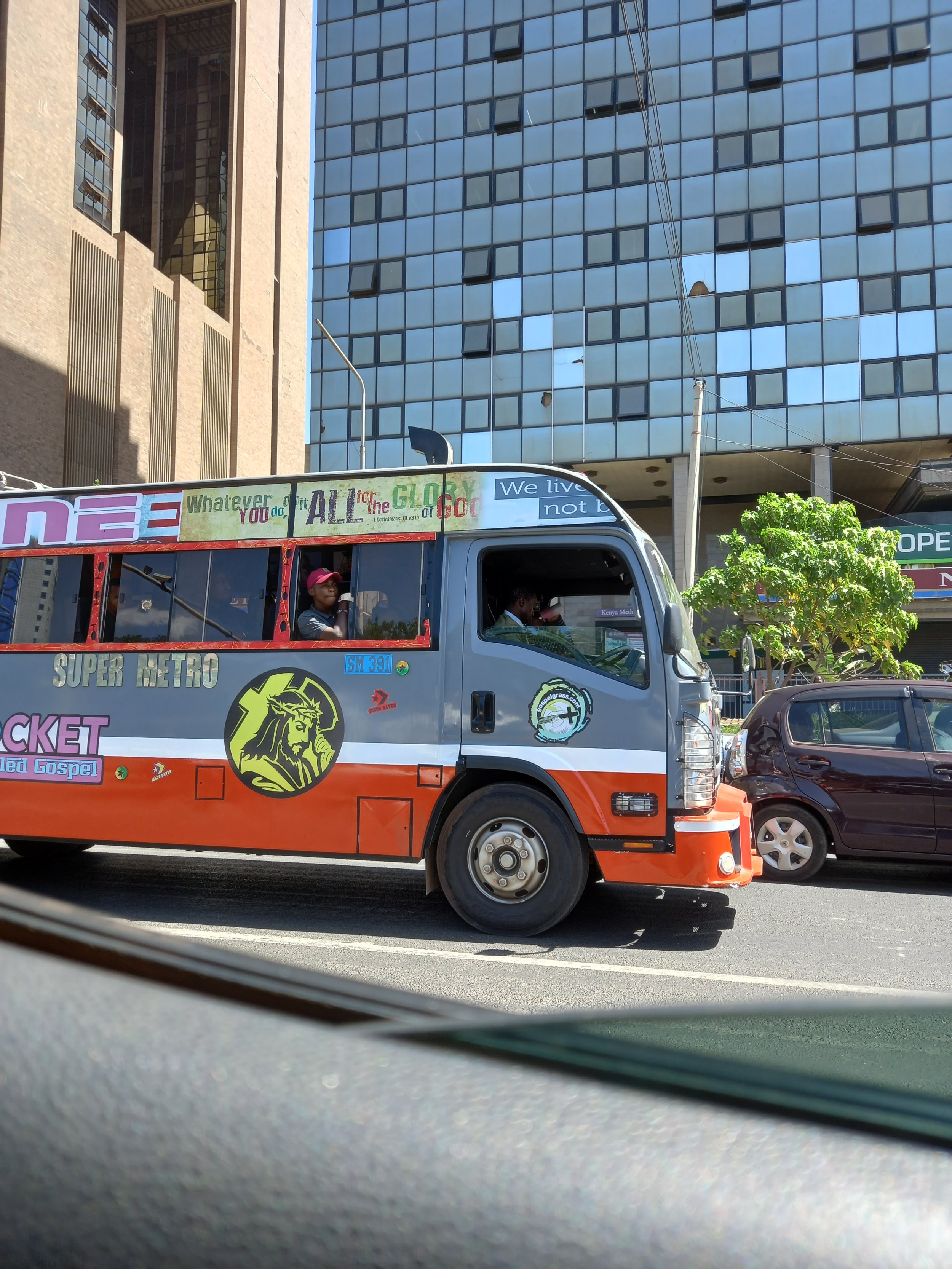Kenya 2023:An Enjoyable and Educational experience
I’ve been to Kenya many times but the trip I took last month (January 2023), stands out to me for two main reasons - it was an enjoyable and educational experience.
Selfie time with a giraffe at the Giraffe Centre.
On the enjoyable front, it was a solo trip. Although I was staying with family, this was the first time that I had ever travelled alone - not just to Kenya, but anywhere in fact. It was a fun thing to do and something that I look forward to doing again someday.
My arrival at the Jomo Kenyatta International Airport.
Secondly, I rode on a Matatu, a popular form of transport used by many Kenyan locals. Privately owned minibuses that are extraordinarily decorated with portraits of famous people, matatus are the cheapest forms of transport costing only 20 shillings (15p). People hail them at any place and at any time, and they stop wherever they feel. Feared by many due to high levels of mugging, robbery, and their reckless driving, it was a great feat that I was able to go on one.
A matatu in Nairobi.
Lastly, I had the opportunity to really see the country in ways I had never before. My trip was split in two - I spent my time both exploring the capital city, Nairobi, while also indulging in the natural scenery that the country has to offer.
Nairobi is full of shopping malls, with every turn hosting a new one. Some are better than the others, and many are undergoing or have undergone renovations, but most have the same core stores and are targeted to the same demographic - the general population of Nairobi. However, depending on the area that the mall is in, there is a slight difference in ethnicity. For instance, in Karen, a predominantly white area, there is a mix of shoppers (Caucasian, Asian, and Kenyan), however, in Westlands, a predominantly Kenyan area, there are mostly only Kenyan locals.
Broadwalk Shopping Mall in Westlands which is under construction.
The first thing that people often think about when you say that you are going to Africa is the natural wildlife and landscape that the continent has to offer. And Kenya is no different. I had the opportunity to engage with multiple pursuits related to this. I went to the David Sheldrick Elephant Orphanage - where I saw 27 baby elephants who had been saved (mainly from poachers and the ongoing drought) and were now being looked after so that they could one day return to the wild -, the Giraffe Centre - where I fed giraffes -, and the Nairobi National Park - where I saw an attempted attack by a crocodile on a herd of zebras.
At the David Sheldrick Animal Orphanage.
Outside of the capital, I visited two Rift Valley Lakes, along with their respective towns - Naivasha (an hour's drive from the capital) and Nakuru (2 hours drive from the capital). Lake Nakuru and Naivasha National Parks are the epitome of the Kenyan natural landscape. In both places I stayed in lodges that had been built around the edges of the park and are thus teeming with wildlife. During our game drives we easily found multiple herds of zebras, gazelles and wildebeest. Lions and rhinos, however, are slightly more difficult to find with patience being the best way to have eyes on them.
The picturesque Lake Nakuru.
The trip was also educational, in that I learned and observed a few things that have been unique to my experiences from previous trips.
Firstly, in Kenya, jobs are made from anything that will ensure people a livelihood. Housemaids and security guards to housing and apartment complexes are a common sight, along with people selling clothes, food items and even drinks in the middle or the sides of streets. They don’t earn a lot to Western standards but it’s enough for them to live on. There is a stark contrast between the rich and the poor, something which I saw especially when driving past Africa’s largest urban slum. Home to around 250,000 people across an area of only 2.5 kilometres, Kibera is a densely populated place. Tall, modern and concrete buildings overlook the small shanties with their corrugated iron sheet roofs. The slum itself is also blocked from the general population through fences and walls which line its perimeter on the expressway.
A vegetable shop in Makindu, a town three hours away from Nairobi.
Next, climate change is real. And being on this side of the world, it's hard not to miss it, especially when travelling through a country as natural as Kenya (outside the capital). Although the drought areas are located in the Northern regions of the country (Turkana, Wajir, Gamburu, and Mandera amongst others), its impacts are far- reaching, particularly when touring the landscapes in the Southern areas. I was only there for 2 weeks and it did not rain the entire time and it is still not due to rain till March. The environment is dry and arid and it was obvious that the herbivorous animals were struggling to find food, often just grazing on the smallest patches of grass. When driving down the roads between cities and even within Nairobi, it is a common sight to see nomads with cattle herds going far and near in search of food and subsistence. At the end of the day, it is their livelihood, and if they are unable to make money, they can’t support themselves and their families.
The dry plains of Nairobi National Park.
This trip was an enjoyable and educational experience, allowing me to visit Kenya in a different way to what I had seen before. I was a passive observer, taking in the natural sights while also considering the social environment of the country I was in.







